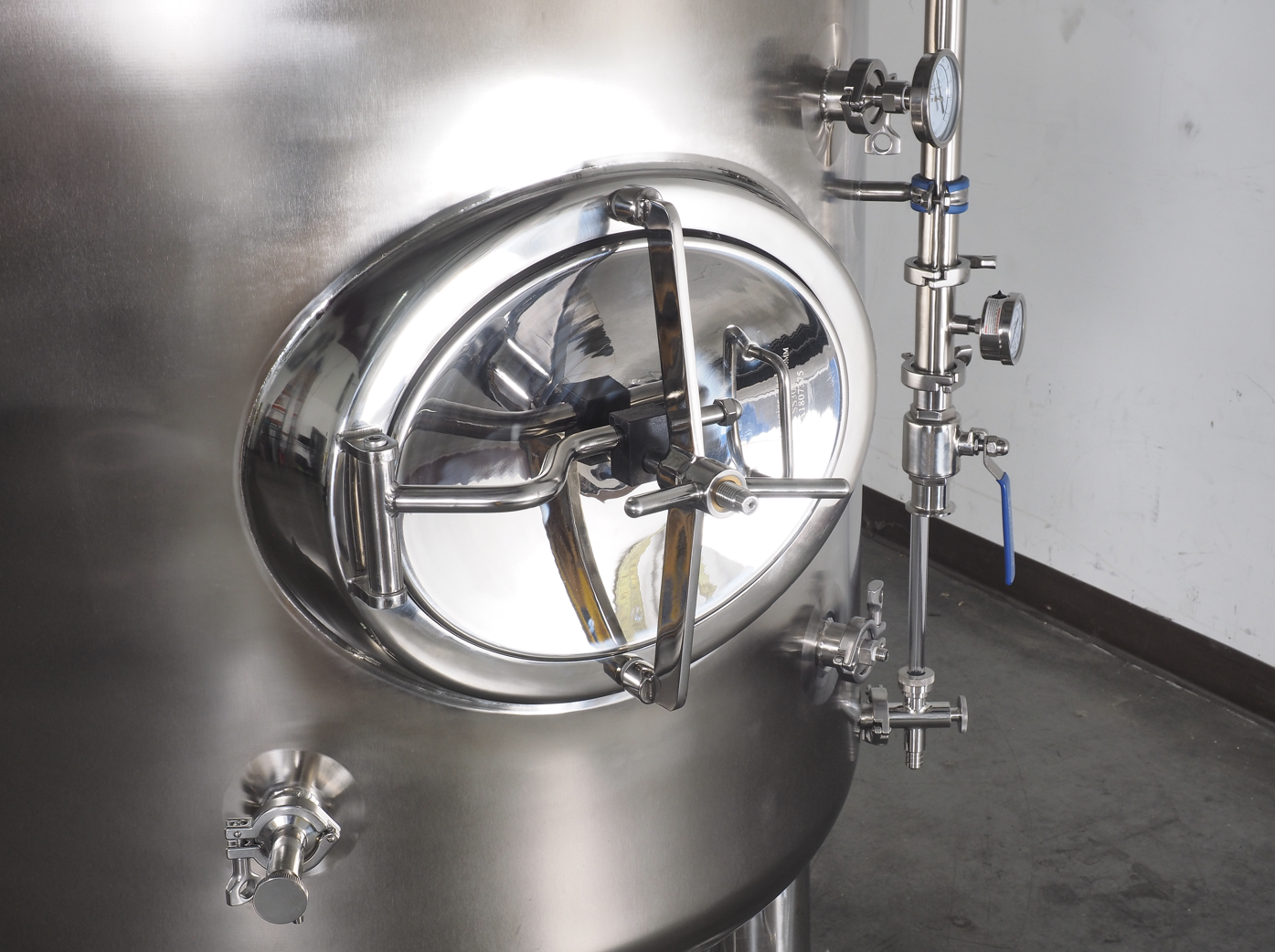Proudly Serving Our Customers
See All ReviewsStainless Steel Manways and Manholes in Sanitary Liquid Process Industries

Stainless Steel Manways and Manholes in Sanitary Liquid Process Industries
In liquid process industries such as food, beverage, pharmaceutical, and industrial manufacturing, stainless steel manways and manholes are critical components. These access points allow for safe, sanitary, and efficient inspection, cleaning, and maintenance of process vessels such as tanks, fermenters, and reactors. While they may appear similar in form and function, there are important distinctions between manways and manholes, and understanding their differences—as well as their types, features, and maintenance needs—is essential to maintaining hygienic standards and operational efficiency. At Glacier Tanks, we supply a variety of manways and manholes to suit your production needs and carry spare parts and seals in stock for regular maintenance.
General Use in Liquid Process Applications
Stainless steel manways and manholes provide a secure and hygienic means of accessing the interior of processing vessels. These access points can be installed on the top, side, or bottom of tanks and are essential for:
- Cleaning in Place (CIP) and manual cleaning
- Visual inspection and routine maintenance
- Insertion or removal of tools, hoses, or internal parts
- Sampling or intervention during production
In industries governed by strict hygiene standards (such as food and pharmaceutical), the quality, finish, and sealing integrity of these access ports are non-negotiable.
Manways vs. Manholes: Understanding the Difference
| Feature | Manway | Manhole |
|---|---|---|
| Pressure rating | Typically designed to handle pressure and vacuum applications (depending on construction) | For non-pressurized applications only |
| Seal type | Often equipped with pressure-rated gaskets and locking mechanisms | Simpler gasket or cover sealing |
| Location | Common on the top or side of pressurized tanks | Often on the side or top of non-pressurized tanks |
| Applications | Sanitary pressurized vessels, fermenters, mixing tanks | Utility access, low-pressure storage tanks |
Types of Manways and Manholes
Stainless steel access points come in a variety of shapes, each offering different advantages depending on the application:
1. Round Manways
- Use Case: Common in tanks and vessels where pressure seals are required.
- Features: Simple design that comes in many sizes for various applications.
2. Oval and Elliptical Manways
- Use Case: Frequently mounted on the side of vessels, allowing personnel entry while minimizing tank cutout size.
- Features: Depending on their construction, they can sometimes be subjected to greater pressures than round manways.
3. Rectangular Manways
- Use Case: Access to larger equipment or internal components.
- Features: Typically used in low-pressure applications due to the difficulty of sealing flat corners under pressure.
Shadowed vs. Shadowless Manways
In sanitary applications, "shadowing" refers to areas that cannot be effectively cleaned by CIP systems due to geometry.
- Shadowed Manways: Have exposed welds and geometries that may trap product or cleaning agents. While less expensive, they may require manual cleaning.
- Shadowless Manways: Are engineered with fully drainable, crevice-free designs. Their construction eliminates internal lip areas, making them ideal for aseptic processes and industries with strict cleanability standards.
Critical Design Consideration: Weld Neck Length
The weld neck or "nozzle" length of a manway can influence both cleaning effectiveness and ease of installation:
- Short weld necks: Offer minimal product retention and better CIP flow but may be harder to install flush with curved tank surfaces.
- Longer weld necks: Easier to weld into place but can create product hold-up or cleaning shadows.
The ideal neck length balances structural integrity with hygienic performance, especially when manways are mounted at an angle or on domed surfaces.
Regular Maintenance Requirements
Even the highest-quality stainless steel manways require routine maintenance to ensure long-term performance:
- Gasket inspection and replacement: Gaskets degrade over time due to temperature, chemical exposure, or mechanical wear. Routine checks prevent leaks or contamination.
- Latch and hinge lubrication: Especially in pressurized manways, hinges and clamps must remain functional to maintain a pressure-tight seal.
- Surface finish maintenance: In sanitary industries, surface integrity (usually 32 Ra or better) must be preserved. Scratches or corrosion can harbor bacteria.
Establishing a preventive maintenance schedule is essential to prevent downtime and product contamination.
Importance of Manufacturer Support and Spare Parts Availability
When selecting a manway or manhole, it's crucial to work with manufacturers that can provide:
- Ongoing access to spare parts (gaskets, latches, seals, handles)
- Technical support for pressure certifications or drawings
- Standardized part numbers for ease of reordering
This ensures that your facility remains operational without delays caused by proprietary or obsolete components. For custom or legacy equipment, it’s often wise to maintain an on-site inventory of critical replacement parts.
Conclusion
Stainless steel manways and manholes are more than just access ports—they are integral to the safety, hygiene, and efficiency of sanitary liquid processing systems. Understanding their distinctions, proper application, and maintenance needs is essential for operators in food, beverage, pharma, and industrial sectors. When chosen carefully and maintained properly, these components help ensure reliable operations, compliance with health standards, and long-term process integrity.
